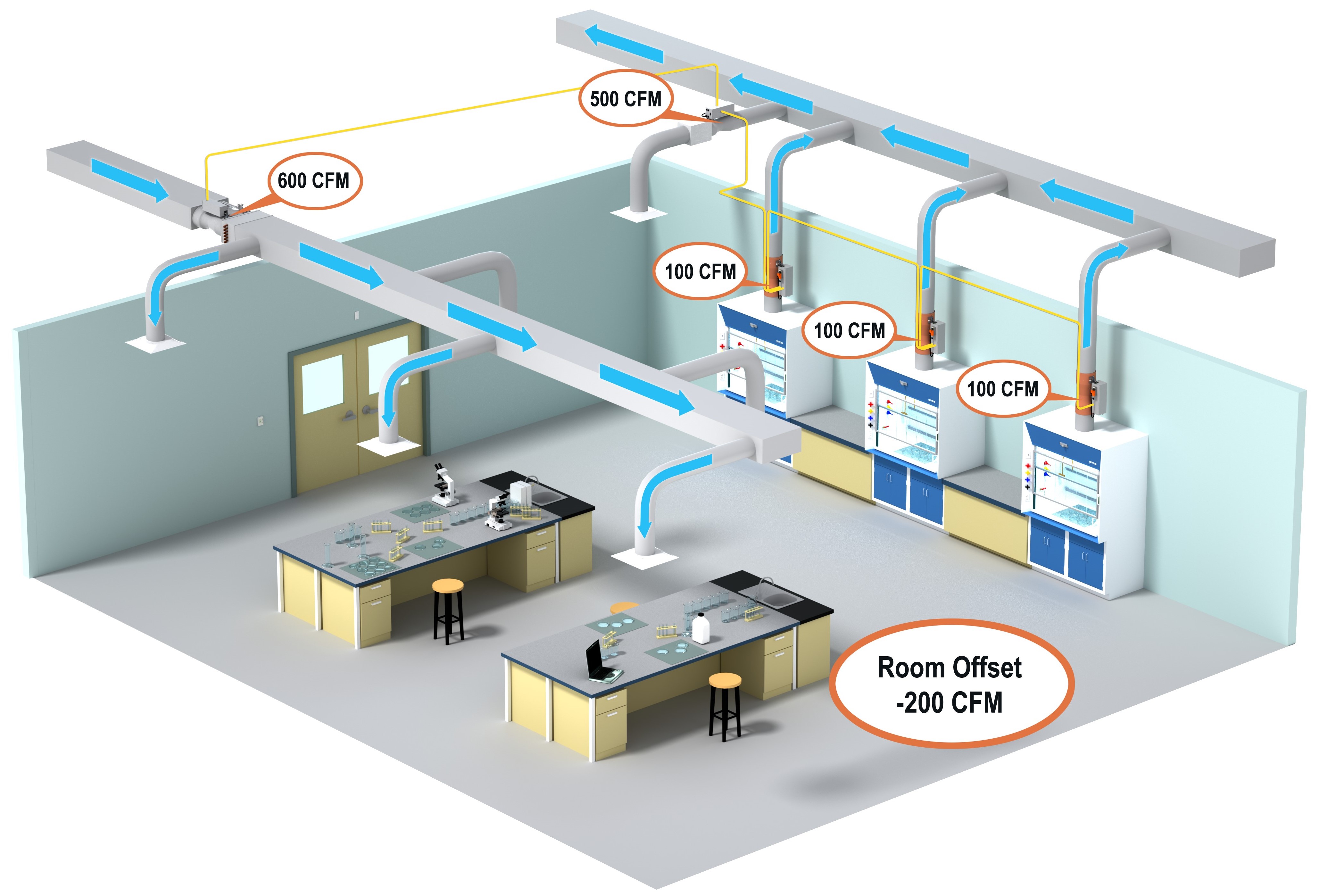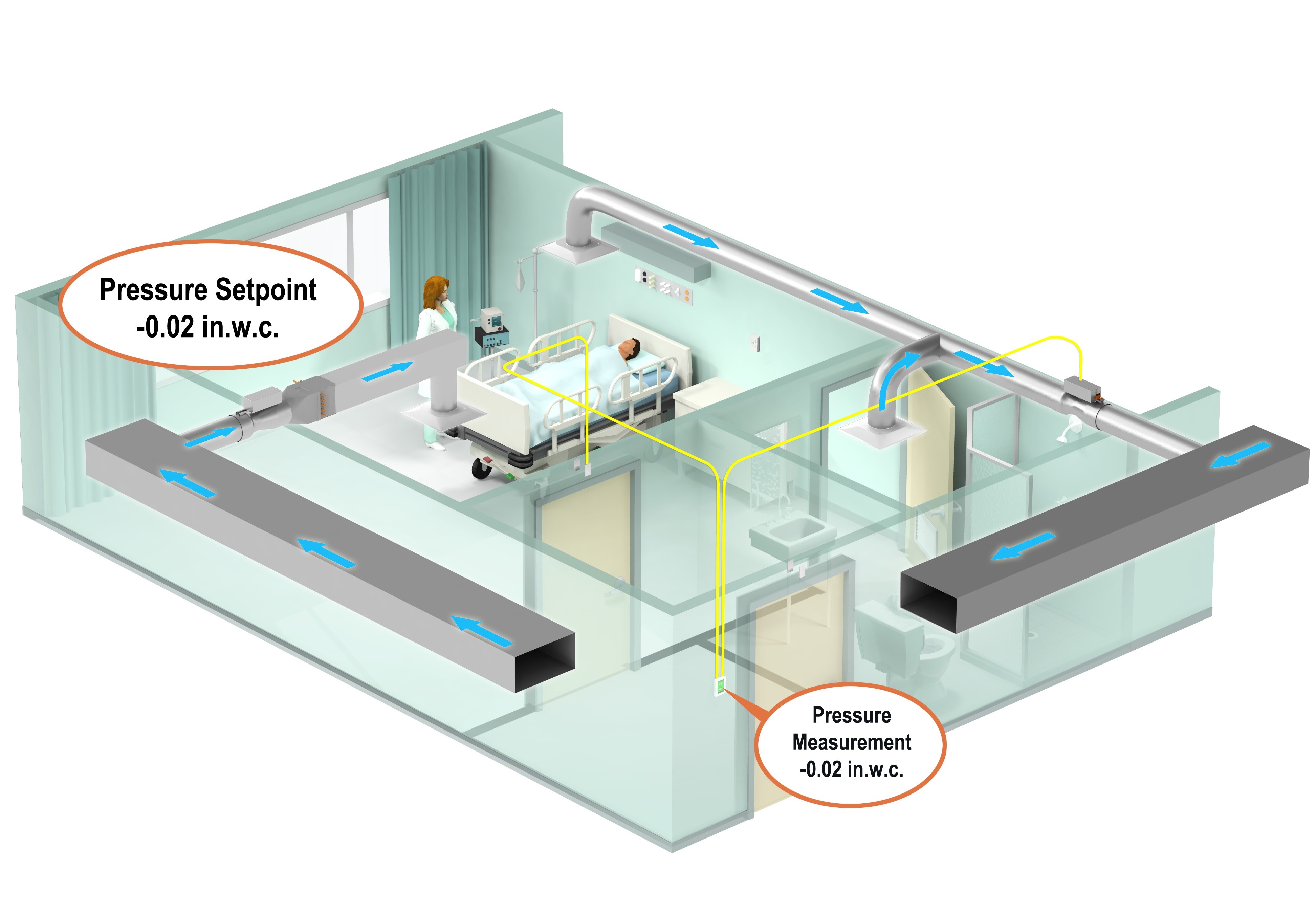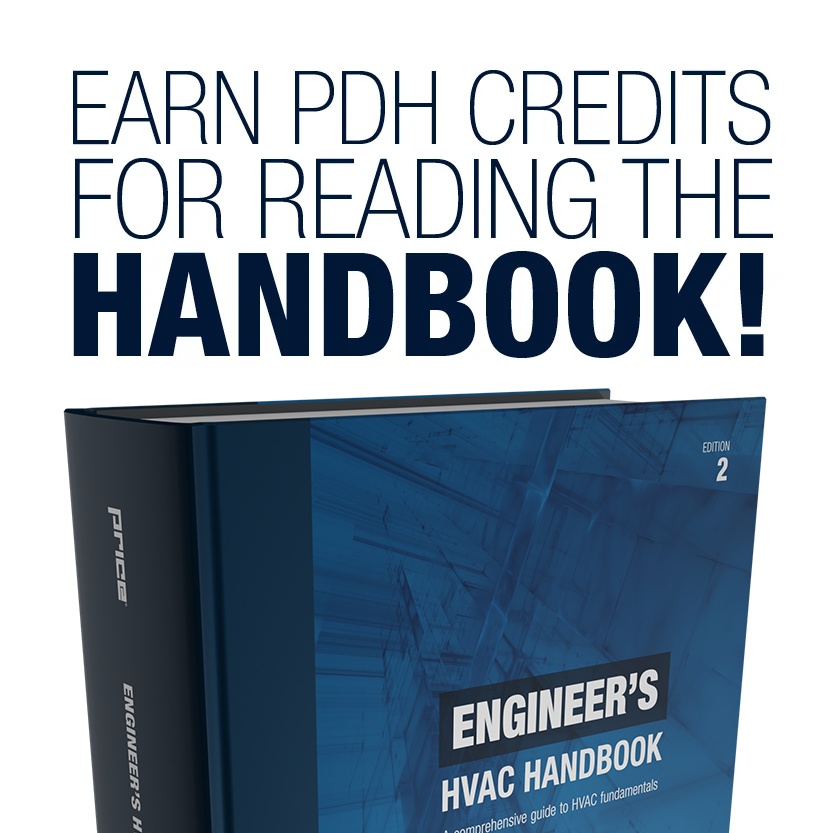Understanding Volumetric Offset and Direct Pressure Control
Maintaining a pressure relationship between a target and reference space provides control over the direction of air leakage that occurs between the spaces. Controlling the direction of this “transfer air” helps to prevent the migration of unwanted particles, which can directly impact occupants and products in or near such spaces.
The two most common sequences to create and maintain a pressure relationship are volumetric offset control and direct pressure control. Understanding the differences between these approaches is crucial for designing optimal environmental control systems that are tailored to the unique requirements of each application.
Volumetric Offset Control
Volumetric offset control requires control and/or visibility of all supply and exhaust air sources into a room. Most often, the supply air is allowed to adjust as needed to maintain temperature control, while the exhaust air is sequenced to maintain a fixed offset between the supply air and the exhaust air. Once the space is built, the flow offset set point is adjusted during the test-and-balance process to ensure the required pressure is achieved.
 |
| Volumetric offset control is particularly suited to laboratory applications |
Due to its simplicity, volumetric offset control lends itself very well to laboratory applications. It’s important to note that pressure measurement is not directly required for the routine functioning of the volumetric offset sequence. Pressure measurement should be selected and employed as needed based on the application.
Direct Pressure Control
Direct pressure control compares a real-time pressure measurement in the target space to a configurable pressure set point and adjusts either the supply or exhaust valve(s) as required to maintain the desired pressure. This sequence tends to perform optimally in stable spaces such as isolation rooms.
 |
| Direct pressure control works well in stable spaces such as isolation rooms |
Designers should be aware that any application of a direct pressure control strategy should consider any sudden pressure changes, such as the opening and closing of doors, as well as fluctuations in the pressurization of adjacent spaces. Depending on their magnitude, these changes can have a significant impact on the stable function of the direct pressure control sequence.
Both volumetric offset control and direct pressure control will create pressurization in critical spaces, but how each sequence achieves this outcome varies. It’s essential for the designers of critical spaces to understand how the pressure control sequencing planned for each project will perform in the intended application.
For more information, visit www.anteccontrols.com or email our team at marketing@anteccontrols.com.



